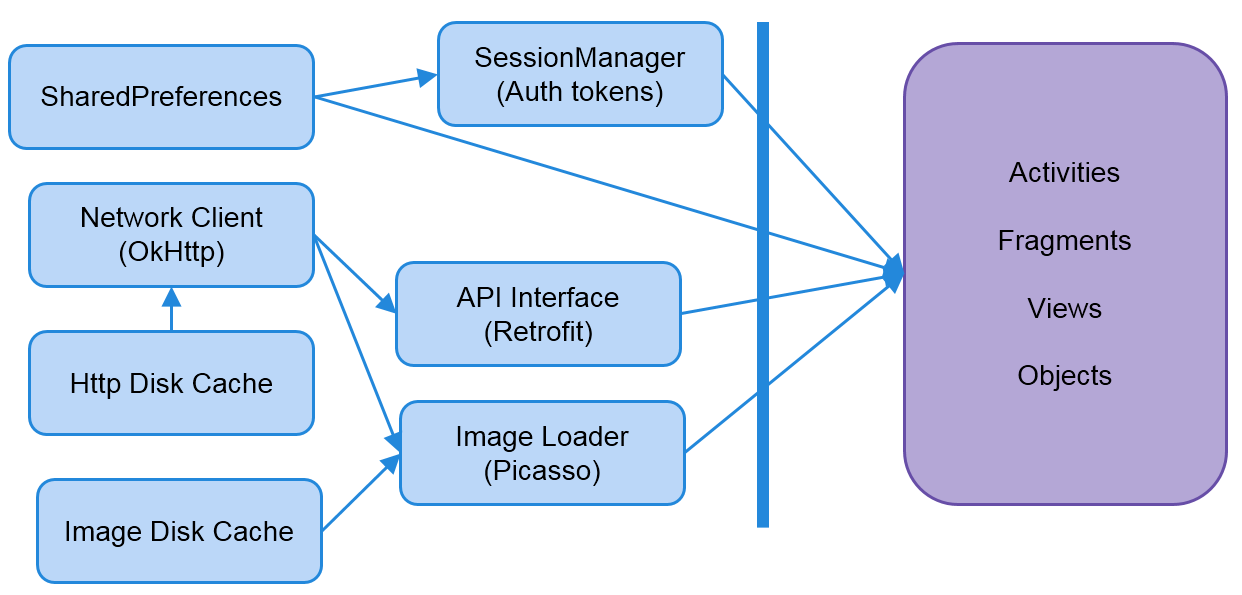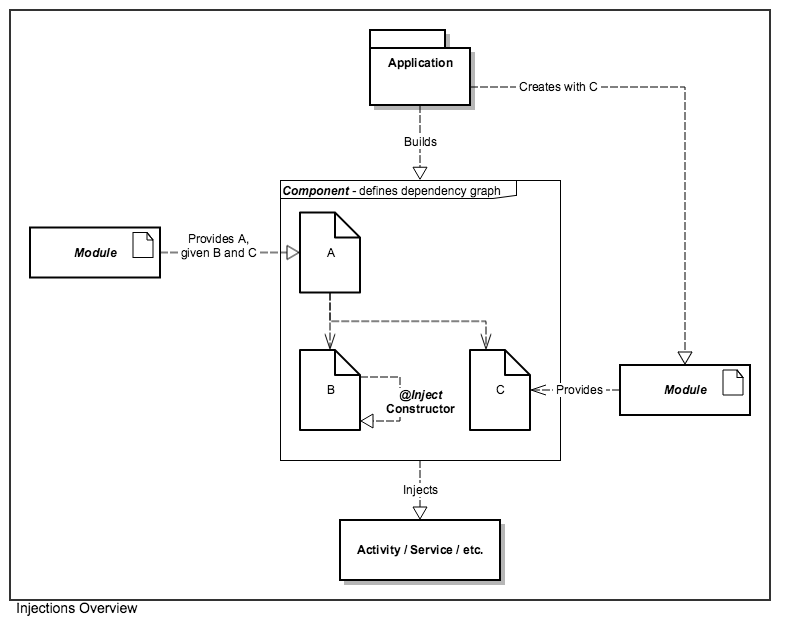Dagger2是什么
Dagger是为Android和Java平台提供的一个完全静态的,在编译时进行依赖注入(DI)的框架,原来是由Square公司维护,现在由Google维护。
优点是:解耦(DI的特性),易于测试(DI的特性),高效(不使用反射,google官方说名比Dagger快13%),易混淆(apt方式生成代码,混淆后依然正常使用)
Dagger2核心概念
@Inject: 在需要依赖的地方使用这个注解。换句话说,你用它告诉Dagger这个类或者字段需要依赖注入。这样,Dagger就会构造一个这个类的实例并满足他们的依赖。
@Module: Modules类里面的方法专门提供依赖,所以我们定义一个类,用@Module注解,这样Dagger在构造类的实例的时候,就知道从哪里去找到需要的 依赖。modules的一个重要特征是它们设计为分区并组合在一起(比如说,在我们的app中可以有多个组成在一起的modules)。
@Provide: 在modules中,我们定义的方法是用这个注解,以此来告诉Dagger我们想要构造对象并提供这些依赖。
@Component: Components从根本上来说就是一个注入器,也可以说是@Inject和@Module的桥梁,它的主要作用就是连接这两个部分。 Components可以提供所有定义了的类型的实例,比如:我们必须用@Component注解一个接口然后列出所有的@Modules组成该组件,如 果缺失了任何一块都会在编译的时候报错。所有的组件都可以通过它的modules知道依赖的范围。
@Scope: Scopes可是非常的有用,Dagger2可以通过自定义注解限定注解作用域。这是一个非常强大的特点,因为就如前面说的一样,没 必要让每个对象都去了解如何管理他们的实例。在scope的例子中,我们用自定义的@PerActivity注解一个类,所以这个对象存活时间就和 activity的一样。简单来说就是我们可以定义所有范围的粒度(@PerFragment, @PerUser, 等等)。
@Qualifier: 当类的类型不足以鉴别一个依赖的时候,我们就可以使用这个注解标示。例如:在Android中,我们会需要不同类型的context,所以我们就可以定义 qualifier注解“@ForApplication”和“@ForActivity”,这样当注入一个context的时候,我们就可以告诉 Dagger我们想要哪种类型的context。
@SubComponent: 该注解从名字上就能知道,它是子Component,会完全继承父Component的所有依赖注入对象!
@Sigleton: 被注解的对象,在App中是单例存在的!
@Named: 因为Dagger2 的以来注入是使用类型推断的,所以同一类型的对象就无法区分,可以使用@Named注解区分同一类型对象,可以理解为对象的别名!
Dagger2的使用

Creating Singletons

整体过程是:
1、创建Module,即依赖注入的提供者,并申明为@Singleton(应用的整个生命周期内单例)
2、创建Compnent,即依赖的注入器,实例的管理都
3、申明需要依赖注入的地方,如Activity内等
4、关联依赖注入关系
1 |
|
1 |
|
1 |
|
1 | public class MyApp extends Application { |
1 | public class MyActivity extends Activity { |
Reference
https://github.com/codepath/android_guides/wiki/Dependency-Injection-with-Dagger-2